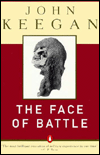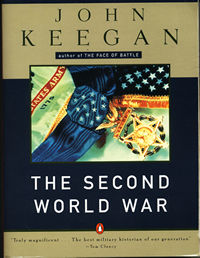 |
||||
![]()
- General
- Alternate History
- Air / Aviation tactics
- Aircaft (US)
- Aircraft (German)
- Aircraft (British)
- Aircraft (Japanese)
- Aircaft (Others)
- Army (US Army)
- Army (German Army, Waffen SS)
- Army (Japanese Army)
- Battle of the Atlantic
- Battle of Midway
- Computers and WWII
- Hitler
- Holocaust
- Intelligence in the War
- Iwo Jima
- Macarthur, Douglas
- Narratives of the War
- Naval Warfare
- Navies (General)
- Navies (US)
- Navies (Germany)
- Navies (Italian + French)
- Navies (Japanese)
- Navies (Bristish)
- Normandy
- Pearl Harbour
- POWS
- Rommel, Erwin
- Snipers
- Submarine Warfare
- Submarines (U-boat)
- Tank Warfare
- Tanks ( Panzer, German Forces)
- Tanks (American Forces)
- Tributes to the Soldiers of
WWII.
- War in the East
- War in the Pacific
- War in the West (Battle Of Britain)
- War in the West (1944 fall
of Berlin)
- Women in the War
![]()
- General
- Sniping
- Weapons
![]()
- General
- Aircraft (General)
- Aircraft (US)
- Aircraft (Soviet)
- Aircraft (European)
- Aircraft tactics
- Gulf War
- Jane's Recognition guides (Guns,
Aircraft, Ships, Tanks, Commercial
Aircraft)
- Sniping
- Marines
-
Well Known Military Authors
- John Keegan
Korea
- American
Airpower Strategy in Korea, 1950-1953
- Night Fighters
over Korea
|
The Face of Battle Author: John Keegan |
 |
|
|
The Face of Battle is military history from the battlefield: a look at the direct experience of individuals at the "point of maximum danger." Without the myth-making elements of rhetoric and xenophobia, and breaking away from the stylized format of battle descriptions. John Keegan has written what is probably the definitive model for military historians. And in his scrupulous reassessment of three battles representative of three different time periods, he manages to convey what the experience of combat meant for the participants. Whether they were facing the arrow cloud of Agincourt, the musket balls at Waterloo, or the steel rain of the Somme. |
|
The Mask of Command Author: John Keegan |
 |
|
|
In The Mask of Command John Keegan explores four different leadership styles and how they reflect our times. Alexander the Great is the "heroic" leader, risking his life alongside his men. Wellington is the "anti-hero"--a gentleman, prepared to fight but without Alexander's theatrics. Ulysses S. Grant, the "unheroic" leader, considered himself no better than his men, making him the ideal democratic leader. Adolf Hitler is the "false-heroic" leader, relying on past glory and simulated heroism, while directing his troops from miles away, In his brilliant conclusion, Keegan promises a fifth type of leader for the nuclear age: a "post-heroic" leader, who acts only after clear, intellectual thought. |
|
The Price of Admiralty : The
Evolution of Naval Warfare Author: John Keegan |
 |
|
|
In his acclaimed classics, the Face of Battle and
the Mask of Command, John Keegan explored in depth the individual's
experience of war. Now, he brings his remarkable powers of analysis
to the history of naval combat, illuminating four landmark sea battles:
The battle of Trafalagr, a classic conflict between wooden ships;
the battle of Jutland, fought by ironclad steamships; The battle
of Midway, where aircraft carriers proved to be key players; the
battle of the atlantic, when submarine warfare marked a major technological
transformation of naval operations. |
|
The Second Author: John
Keegan |
 |
Table Of Contents
Total pages = 608 |
|
Description -
Editorial Reviews Amazon.com From Book News, Inc.
, April 1, 1991 |
||
All info and pictures in this site appear courtesy of the following web sites.
All questions and inquiries should be made to the webmaster.
Last updated : Monday, November 18, 2002 0:36 AM







